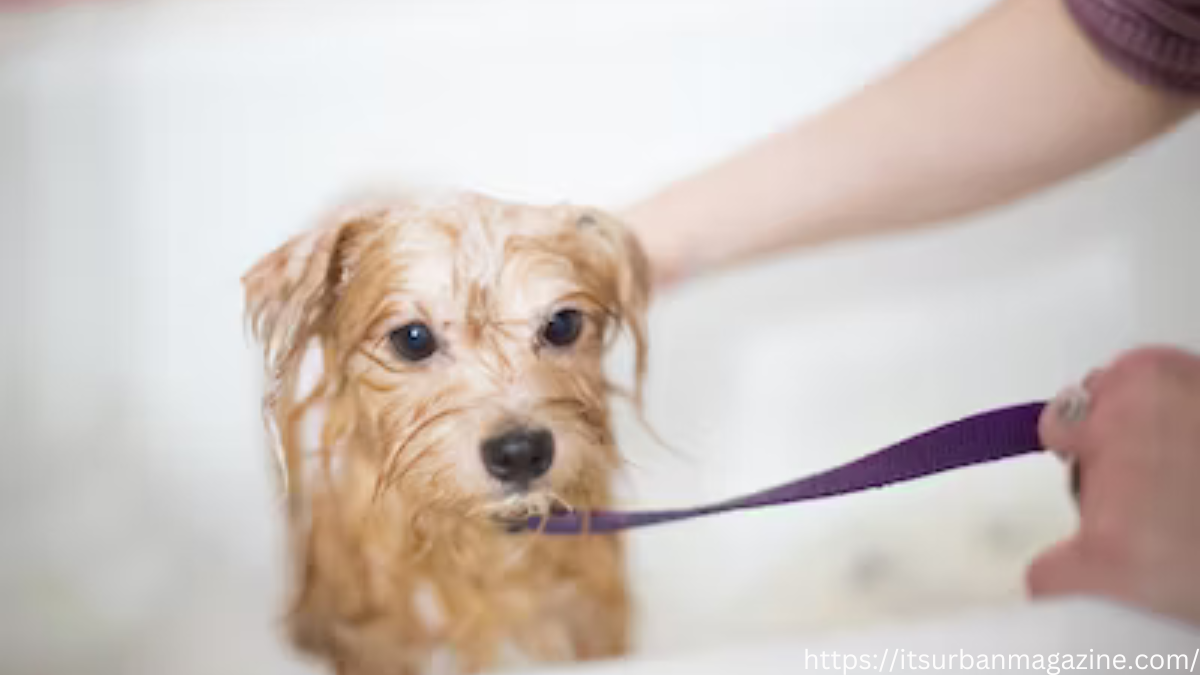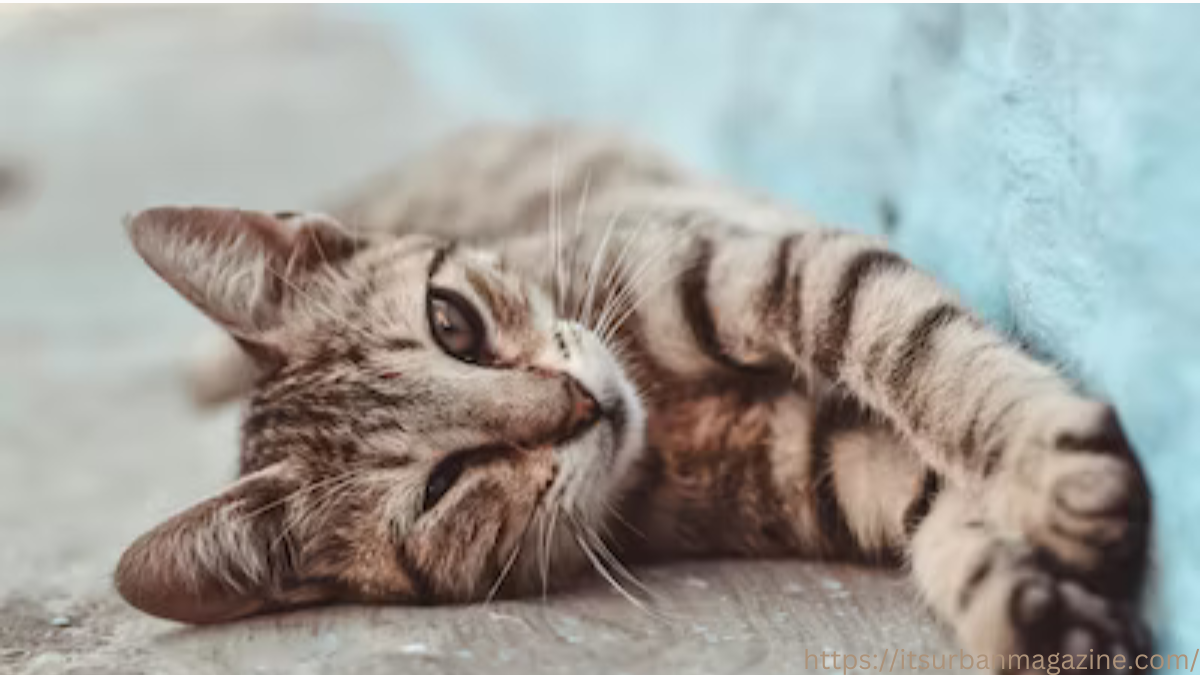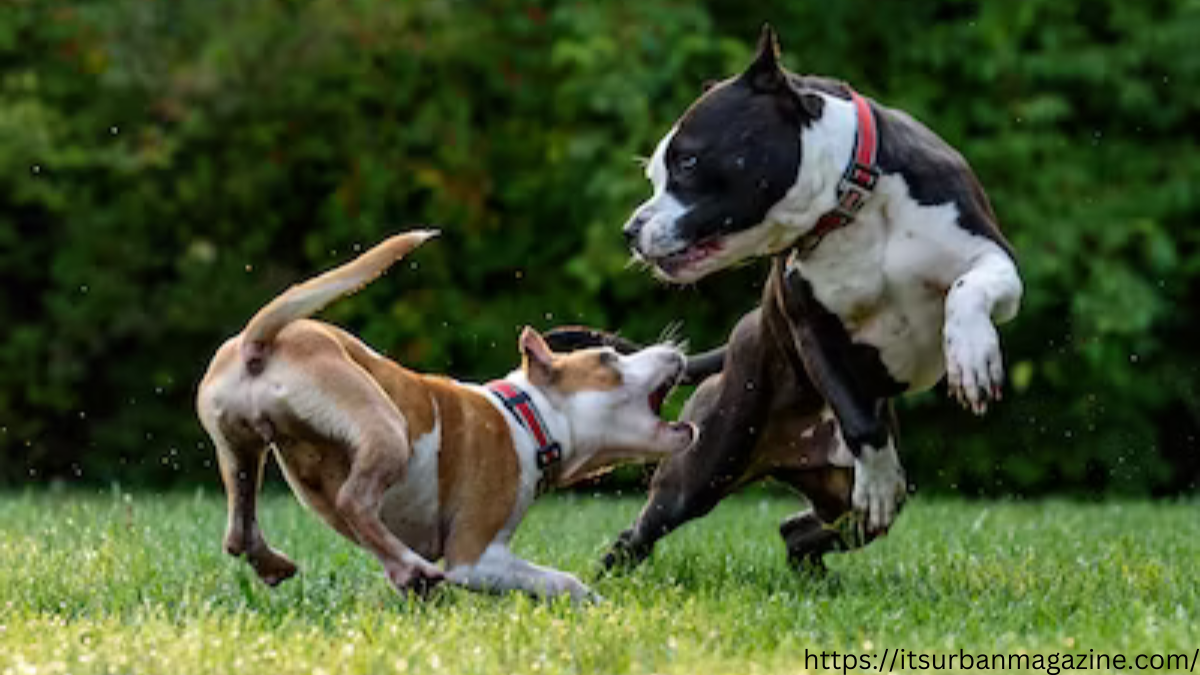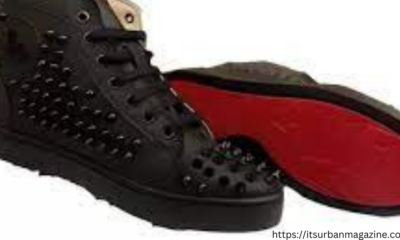Pet's
Better Animals Plus Fabric: A Sustainable Blend

Better Animals plus fabric are becoming more and more vital to today’s rapidly developing fashion and textile industries. Innovations that help both animals and the environment have arisen in response to the growing consumer desire for sustainable and ethical products. The history, advantages, and significance of animal-friendly materials in the fashion industry will all be discussed in this article.
The Intersection of Animals and Fabric
Wool, silk, and leather are all examples of classic textiles made from animal products. Despite these materials’ long history of usage, many of the methods employed to produce them are questionable. There is an option available in the form of “animal-friendly fabrics,” which allow us to experience the luxury and elegance of textiles derived from animals without subjecting them to unnecessary suffering.
The Evolution of Sustainable Fabrics
The textile business has seen a profound change towards sustainability throughout the years. Organic cotton, Tencel, and bamboo cloth are some examples of recent innovations that have acquired appeal because of their environmentally friendly manufacturing procedures and low environmental effect. You may now wear fashionable, cruelty-free garments made from these materials.
Benefits of Using Animal-Friendly Fabrics
There are several benefits to using textiles that are kind to animals. Because they are hypoallergenic, they are safe for anyone who suffer from allergies. They allow air to circulate and drain sweat away from the skin, making them exceptionally comfortable. Fabrics with these characteristics are noted for their longevity thanks to their resistance to wear and tear.
A Glimpse into Animal-Free Textile Innovations
Fabrics like Piatex, a sustainable substitute to leather derived from pineapple leaf fibers, are now possible because to advancements in textile technology. In addition, conventional animal-based textiles have alternatives in lab-grown materials like lab-made silk. Consumers now have many options that don’t skimp on design, convenience, or morals thanks to these developments.
Animal-Friendly Fabrics in Fashion
Vegan textiles are becoming increasingly popular among fashion houses. By using these materials, they are demonstrating that ethical fashion can also be stylish. Consumers no longer need to choose between being kind and looking good.
The Environmental Impact
When compared to conventional materials made from animals, the creation of animal-friendly textiles has a far smaller ecological footprint. Better animals plus fabric are eco-friendly because they need less water, produce less waste, and release less greenhouse gases. Consumers may help the fashion sector reduce its carbon footprint by opting for textiles that aren’t tested on animals.
How to Care for Animal-Friendly Fabrics
To extend the life of your animal-friendly materials, proper maintenance is required. Be sure to wash your clothes according to the label’s directions, and consider switching to detergents that are gentler on the environment. The quality of these textiles can be extended by storing them in a cool, dry environment.
Conclusion
Better Animals plus fabric that are kind to animals are a boon to the textile business in a time when concern for the environment and humane treatment of animals is on the rise. They provide a caring option for shoppers, making it possible for principled people to dress well and feel great in their clothes. The future of the fashion business looks brighter and more sustainable the more these materials are used by the industry.
FAQs
Q. Are animal-friendly fabrics as durable as traditional materials?
Yes, many animal-friendly fabrics are known for their durability and resistance to wear and tear, making them a long-lasting choice.
Q. Can I find animal-friendly fabrics in various styles and designs?
Absolutely! Fashion designers and brands are increasingly incorporating animal-friendly fabrics into their collections, offering a wide range of stylish options.
Q. Do animal-friendly fabrics have any environmental benefits?
Yes, the production of these fabrics has a significantly lower environmental impact, contributing to a more sustainable fashion industry.
Q. How can I care for animal-friendly fabrics to ensure their longevity?
Follow the care instructions on the garment’s label, use eco-friendly detergents, and store them in a cool, dry place.
Q. Where can I find animal-friendly fabrics and products?
Many retailers and online stores now offer a variety of animal-friendly fabric options. You can also look for fashion brands that prioritize ethical and sustainable practices.
Pet's
Klee Kai Adoption: Finding Your Perfect Furry Companion

The Klee Kai is a standout among the many dog breeds available for individuals looking for a devoted and endearing friend. Klee Kais, often called Alaskan Klee Kais, are a unique breed of dog that has won the hearts of many people. This guide will help you choose the best Klee Kai for adoption by delving into the world of Klee Kai adoption and providing helpful insights and advice along the way.
What is a Klee Kai?
Let’s spend some time learning about this rare breed before we start the adoption procedure. Klee Kais range in size from tiny to medium and resemble the larger Siberian Husky in appearance. People are typically taken aback by their imposing look, which consists of piercing eyes and a fluffy coat. Intelligent, devoted, and full of life, these canines are a popular pet choice.
The Klee Kai Adoption Process
Research and Preparation
Understanding Your Lifestyle
Evaluate your current way of life and living arrangements before beginning the process of adopting a Klee Kai. Because of their high energy levels, Klee Kais do best in surroundings where they can get enough of exercise and mental stimulation. Make sure you can give your new friend the time and attention they need.
Finding Reputable Breeders
Finding a reliable breeder is an important first step in the process of obtaining a Klee Kai. Try to find breeders that have a history of doing things right and producing healthy pups. A reputable breeder will give you details about the puppy’s ancestry, immunisation record, and health.
Adoption vs. Purchase
Adoption from Shelters
Look into local animal shelters and Klee Kai-specific rescue groups if you’re interested in adopting a rescued Klee Kai. Adopting a dog in need can be quite fulfilling, and you never know when you could stumble onto a Klee Kai that is looking for a forever home.
Purchasing from Breeders
Make sure the breeder you buy your Klee Kai from is ethical before making the investment. It’s important to get to know the breeder and visit their facilities to make sure the puppies are being cared for properly.
The Cost of Klee Kai Adoption
Initial Costs
Initial costs for a Klee Kai adoption or purchase might range widely. Puppy prices often include vet bills, food, and other incidentals like microchipping and spaying or neutering. To give your new pet the best possible start in life, it’s important to set aside money for these things.
Ongoing Expenses
Klee Kais need a healthy food, frequent grooming, and checkups with the vet. To maintain your pet in tip-top form, you’ll need to spend money on things like food, grooming supplies, and regular checkups.
Welcoming Your Klee Kai Home
Puppy-Proofing Your Space
It’s important to make sure your house is secure for a Klee Kai before bringing one home. Puppy-proof your home by putting baby gates around stairs, closing lids on garbage cans, and covering exposed electrical outlets.
Socialization and Training
Klee Kais require extensive early socialisation and training. Your dog will develop into a social and outgoing companion if you introduce him to new people, animals, and places at a young age. If you want to establish a solid relationship with your Klee Kai, enrolling in obedience courses is a great idea.
The Joys of Owning a Klee Kai
Bonding with Your Companion
Relationships between Klee Kais and their owners are legendary. They enjoy being around others and want to be a regular part of your life. Experience the thrill of having a loyal and loving pet in your home with a Klee Kai.
Staying Active Together
Your Klee Kai will make the ideal companion if you like an active way of life. These pooches will keep you active and healthy by sharing your enthusiasm for outdoor pursuits like hiking and jogging.
Conclusion
Adopting a Klee Kai, in conclusion, may be a very rewarding experience. These adorable canines will inject your life with happiness, loyalty, and vitality. However, the health and happiness of your pet relies on your adopting or buying them responsibly. If you follow the advice in this piece, you should have no trouble locating a compatible Klee Kai friend.
FAQs
Q. What is the average lifespan of a Klee Kai?
The average lifespan of a Klee Kai is around 12 to 16 years, provided they receive proper care and attention.
Q. Do Klee Kais shed a lot?
Yes, Klee Kais do shed, especially during seasonal changes. Regular grooming can help manage their shedding.
Q. Are Klee Kais good with children?
Klee Kais can be good with children when properly socialized and trained. However, they may have a high prey drive, so supervision is essential.
Q. Are Klee Kais prone to any health issues?
Klee Kais are generally healthy dogs, but they can be prone to certain genetic health issues like luxating patellas and juvenile cataracts. Regular vet check-ups are essential to monitor their health.
. Can Klee Kais live in apartments?
While Klee Kais can adapt to apartment living, they thrive in homes with access to outdoor space for exercise and play. Regular walks and outdoor activities are crucial for their well-being.
Pet's
The Majestic Big Pussycat: A Closer Look at Large Feline Species

Big pussycat are one of the few animals that can hold our attention in the vast animal kingdom. Throughout history, people have adored, feared, and venerated big cats like lions, tigers, leopards, and cheetahs. The biology, habits, conservation status, and essential function that these top predators play in our ecosystem will all be discussed in detail as we dig into their fascinating world in this article.
Understanding the Big Pussycat Species
Lions: The Social Kings
Lions are the only felids that live in social groups called prides. We’ll delve into their one-of-a-kind culture, hunting methods, and conservation issues.
Tigers: The Striped Giants
Tigers are the biggest of the big cats and have a distinctive orange coat with black stripes. Find out where they live, what kinds of subspecies there are, and what’s being done to prevent them from going extinct.
Leopards: The Stealthy Spots
Leopards are widespread throughout Africa and Asia, demonstrating their mastery of stealth. Discover the obstacles they encounter in a world that is always shifting and how they manage to adapt.
Cheetahs: The Speedsters
Faster than any other terrestrial mammal, a cheetah may achieve astounding speeds. We’ll look at what makes them special and the measures being taken to keep them from extinction.
The Role of Big Pussycats in Ecosystems
Apex Predators
These big cats are essential to the health of their respective habitats. Learn how they control predator numbers and sustain diverse ecosystems.
Trophic Cascades
Investigate trophic cascades to see how the presence of top predators may have a domino effect throughout a system.
Conservation Challenges
Habitat Loss
Big pussycat numbers are under danger because of human activities that destroy their habitat. We’ll talk about how urbanization and tree cutting affect the environment.
Poaching and Illegal Wildlife Trade
It’s easy to make money in the illegal trading of large cat parts. Discover the tragic results of poaching and the measures to stop it.
Human-Wildlife Conflict
Encounters in Human Territories
As human populations expand, conflicts between humans and big pussycats are on the rise. We’ll explore the challenges of coexisting with these apex predators.
Mitigation Strategies
Discover the innovative measures taken to reduce human-wildlife conflicts, including the use of technology and community-based conservation programs.
The Conservation Heroes
Conservation Organizations
There are a lot of groups out there who are trying to make sure large kitties are safe. We’ll focus on a few of the most notable and discuss the difference they’ve made.
Success Stories
Learn about inspiring large pussycat conservation success stories that highlight the resiliency of these lovely animals.
Conclusion
In conclusion, large felines are more than simply pretty faces; they play a crucial role in maintaining Earth’s delicate balance. We owe it to future generations to ensure that these magnificent creatures may continue to thrive by doing everything we can to keep our planet in good shape.
FAQs
Q. What is the largest big pussycat species?
The largest of the big pussycats is the tiger, known for its impressive size and striking appearance.
Q. Why are big pussycats important for ecosystems?
Big pussycats are apex predators that help regulate prey populations and maintain the balance of their ecosystems.
Q. How can I contribute to big pussycat conservation?
You can support big pussycat conservation by donating to reputable organizations, raising awareness, and advocating for stricter anti-poaching laws.
Q. Are all big pussycat species endangered?
Many big pussycat species are endangered or vulnerable due to habitat loss, poaching, and human-wildlife conflict.
Q. Where can I learn more about big pussycat conservation efforts?
You can find more information about big pussycat conservation from organizations such as the World Wildlife Fund (WWF) and the Wildlife Conservation Society (WCS).
Pet's
The Allure of Blue Tri Bully Dogs

The remarkable beauty of Blue Tri Bully dogs has been entrancing pet lovers for some time. Here, we’ll take a closer look at these gorgeous dogs by discussing their background, personality traits, and what makes them such a popular pet.
What Makes Blue Tri Bully Dogs Special?
Dogs of the Blue Tri Bully breed are well-known for their outstanding good looks and friendly demeanor. What makes them different from one another?
Mesmerizing Coat Colors
The stunning coat colors of Blue Tri Bully canines are instantly recognizable. These canines are instantly recognizable thanks to their striking color scheme of blue, black, and white. Their coats are so shiny that they stick out like polished sapphires in any throng.
Gentle Temperament
Blue Tri Bully dogs are renowned for their kind demeanor and adoring attitude in addition to their striking appearance. They have an unwavering devotion to their owners and often develop close relationships with members of the same family. Because of this, they make wonderful pets and loyal companions for any family.
Muscular Build
Dogs of the Blue Tri Bully breed are known for their powerful physiques and athletic prowess. Their sturdy build is evidence of their speed and stamina. They are wonderful for energetic people and families because they are always up for a game of fetch or a long walk.
A Brief History of Blue Tri Bully Dogs
A combination of the American Pit Bull Terrier and the American Staffordshire Terrier is responsible for creating the Blue Tri_Bully. This stunning breed was developed via generations of selective breeding for a few key characteristics.
Blue_Tri Bully dogs have come a long way from their ancestry as bull-baiting dogs and farm dogs. They are a great example of versatility and adaptation, having made the transition from working dogs to family pets.
Why Choose a Blue Tri Bully Dog?
Blue Tri_Bully dogs have come a long way from their ancestry as bull-baiting dogs and farm dogs. They are a great example of versatility and adaptation, having made the transition from working dogs to family pets.
Stunning Aesthetics
Their captivating coat colors and unique markings make Blue_Tri Bully dogs a visual delight. They are sure to turn heads wherever you go.
Family-Friendly
Due to their sociable and loving nature, Blue_Tri Bully dogs make great additions to households of all sizes.
Low Maintenance
Their short coats are low maintenance and easy to care for, making them ideal for busy people.
Loyalty and Protection
They make excellent security dogs and watchdogs since they are extremely loyal and protective of their human family.
conclusion
Blue Tri_Bully dogs are an exceptional breed because of their beautiful appearance and sweet demeanor. These canines are perfect for anyone looking for a loving pet or a stylish new member of the family. If you’re looking for a loyal companion, think about adopting a Blue_Tri Bully.
-

 FASHION4 months ago
FASHION4 months agoIntroduction to Nike Snowboard Boots
-

 TECH9 months ago
TECH9 months agoUrban Dictionary OP: A Definitive Guide to Internet Slang
-

 FASHION8 months ago
FASHION8 months agoThe Allure of Suela Roja: Red Soles that Redefine Elegance
-

 NEWS9 months ago
NEWS9 months agoUnveiling the Enigmatic World of “imaubreykeys”
-

 NEWS10 months ago
NEWS10 months agoEnhancing Educational Management with LAUSD MISIS: A Comprehensive Guide
-

 NEWS10 months ago
NEWS10 months agoNOAA Vessel Speed Rule: Navigating Oceanic Waters Responsibly
-

 NEWS10 months ago
NEWS10 months agoAsia Cup 2023: The Cricket Extravaganza
-

 EDUCATION8 months ago
EDUCATION8 months agoC.W. Park USC Lawsuit: Unraveling the Controversy
